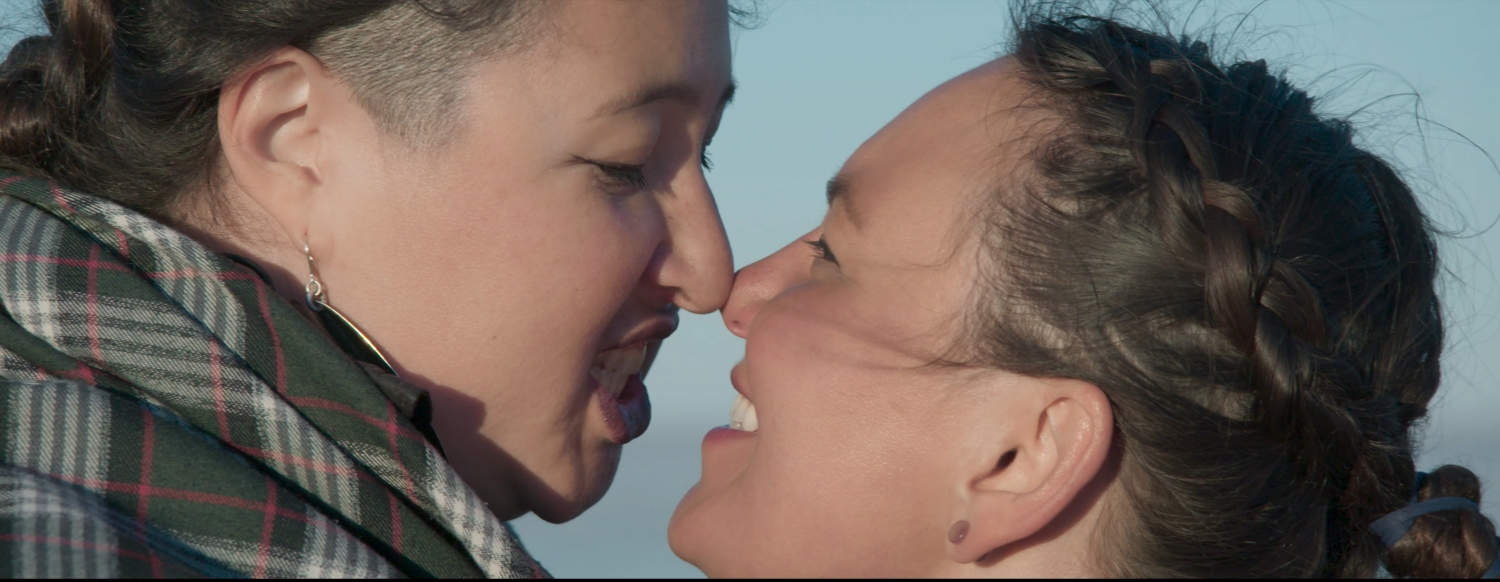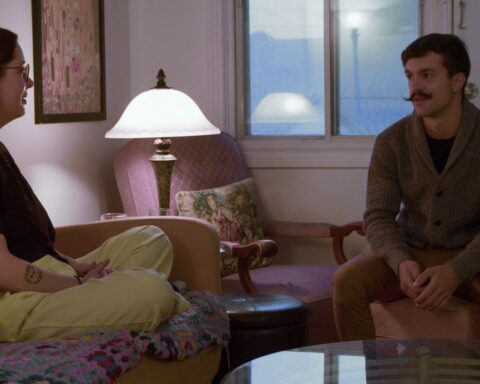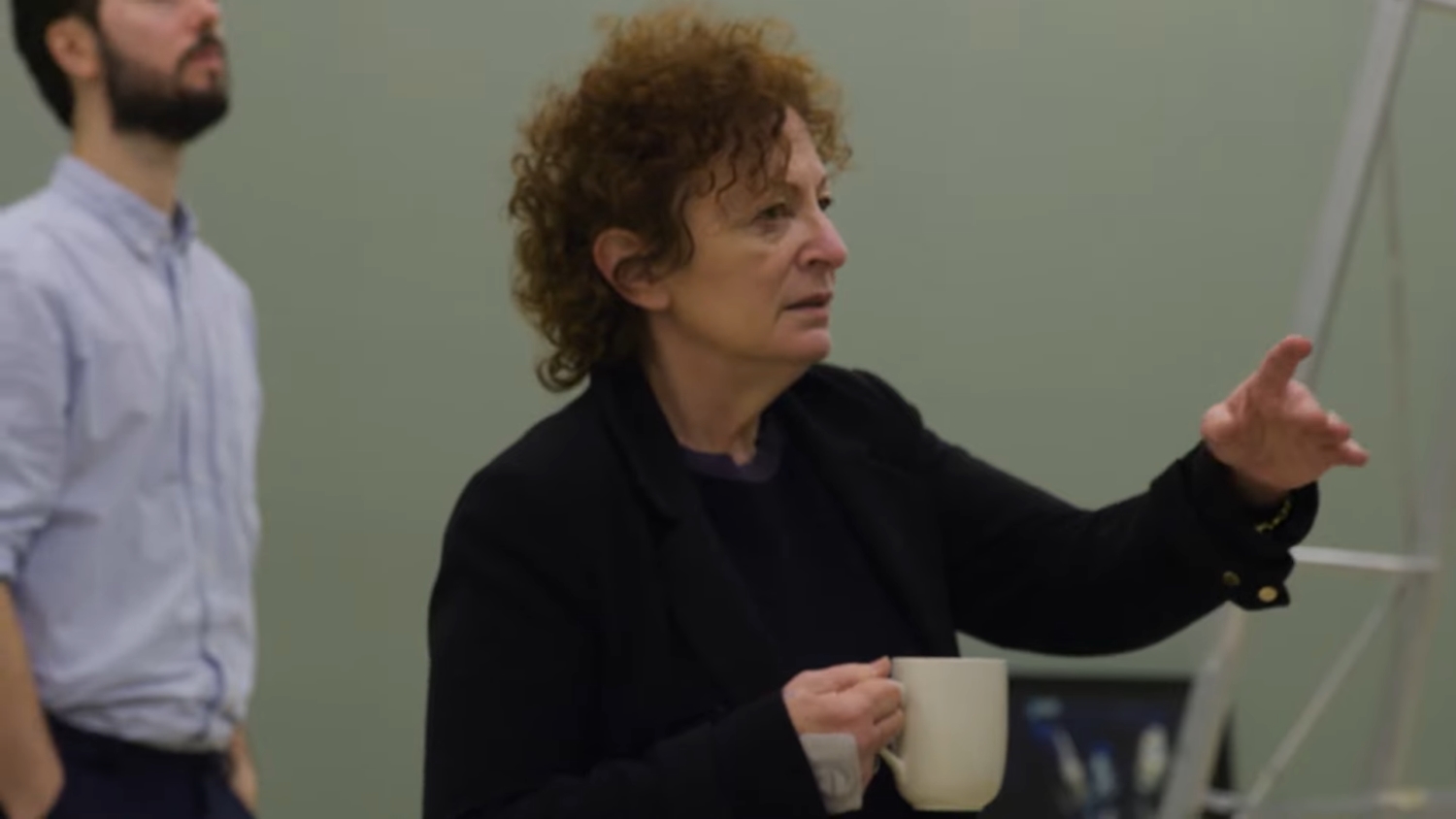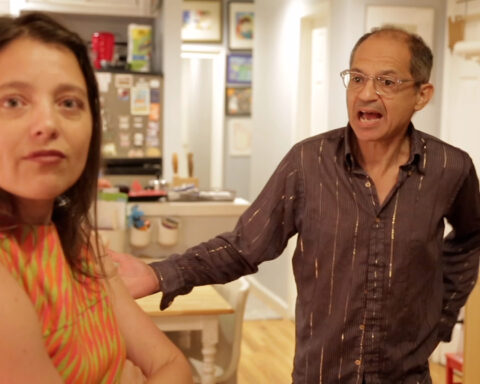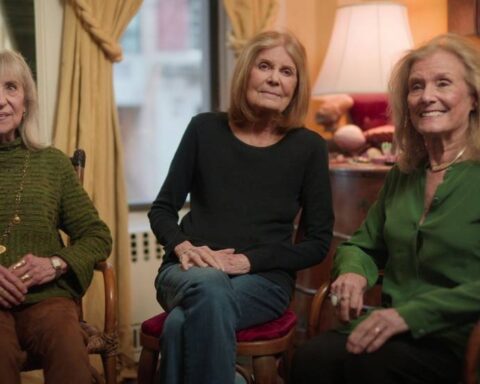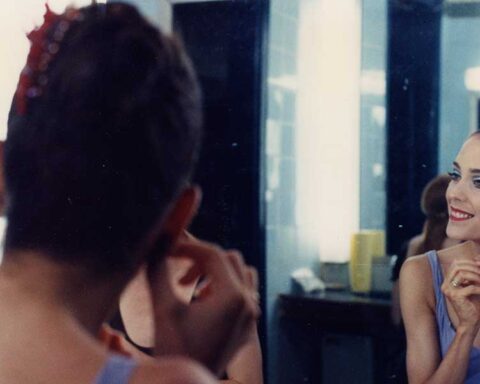It’s one A.M. The light is beautiful, clear, and blue. Two women stand close to each other on land overlooking the sea. They look deeply into each other’s eyes, moving together, just slightly apart as they sing. We can pick out the sounds of animals and birds. Their music is play, foreplay, tradition, expertise. The song ends in release, a laugh, a smile.
The terrain around them is vast, but thanks to the cinematographer, we feel as if we are standing right beside them. The camera loves the singers, one slightly smaller than the other, swaying to the rhythm of the music. The somewhat taller one, Laakkuluk Williamson Bathory, is a performer of exceptional power. She has to be: Her sensuous expressions of connection and joy are sung to the stunning vocalist Tanya Tagaq. It is throat singing at its best and forms a truly powerful opening scene for Ever Deadly, the new film from Tanya Tagaq and her co-director, Chelsea McMullan.
Tanya Tagaq is a powerful force on both the Canadian and international music scenes. She has been recognized for her music with multiple Junos and the Polaris Prize; her book, Split Tooth, was on the long lists for the Giller Prize and the Amazon.ca First Novel Award. Tagaq has collaborated with Björk and with the Kronos Quartet. Her music is unique, and not only because she favours improvisation over repetition. She developed throat singing as a solo performance while she was studying at the Nova Scotia College of Art and Design, which was absolutely unique, as it is traditionally performed in a call-and-response style. Working with an audio tape of singing sent by her mother, Tagaq forged her own style.
Ever Deadly is propelled by Tagaq’s anger and passion. It’s there in her book and music and is the throughline in the film. Writing of Tagaq’s music, Mary Dickie has commented: “Anger is an energy, and it’s always been the fire that feeds Tanya Tagaq’s music. Even when she wordlessly roars or coos, shrieks, or wails, it’s impossible not to feel her incendiary rage vibrating in your gut and through you, along with all the pain and joy, fear and love swirling in the earthy and unearthly sounds that emerge from her body in such devastating and mesmerizing ways.”
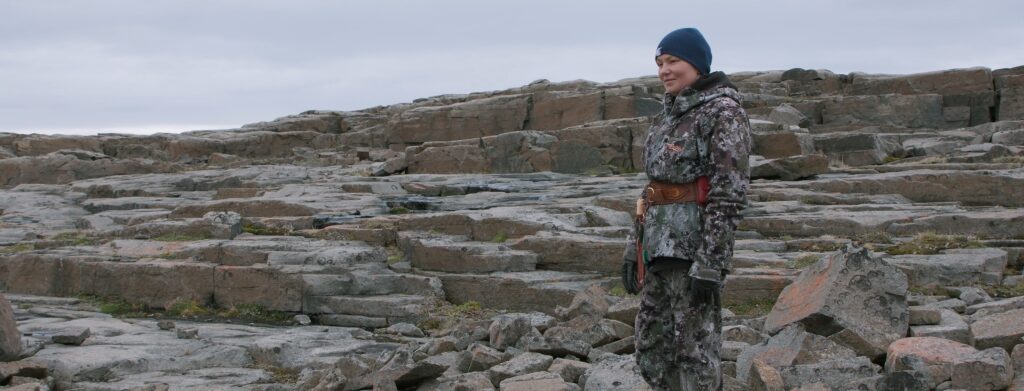
Displacement has played a major role in Tagaq’s family. Her mother was from Pond Inlet, but her family was forced to relocate to Resolute Bay by the federal government. This story, which Tagaq insisted be told by her mother in her own language, is central to Ever Deadly and to their family’s life. She left home at 15, first to school in Yellowknife, then to Halifax. Tagaq is never as comfortable in the south as she is at home. The difference in her physical bearing when she is on the land is one of the most striking elements of the film. On the land, she is smiling and relaxed, without the protective mask of makeup, the armour of performance.
Ever Deadly incorporates footage from Land of the Long Day (1952), a classic NFB film shot in Pond Inlet. We see a happy, strong Inuk man in his qajaq, hunting. The man is Tagaq’s grandfather. Not long after the film was made, we learn, he and his wife and their children, including one yet unborn, were told to move to another place. They are told it will be easy to hunt and live there. In her interview in Inuktut, Tagaq’s mother, Mary, describes the difficult voyage to Resolute Bay through the ice-packed strait, and the tent her father made for them to live in that first winter. She says that her parents, who had been so strong and powerful before, were never the same after the move.
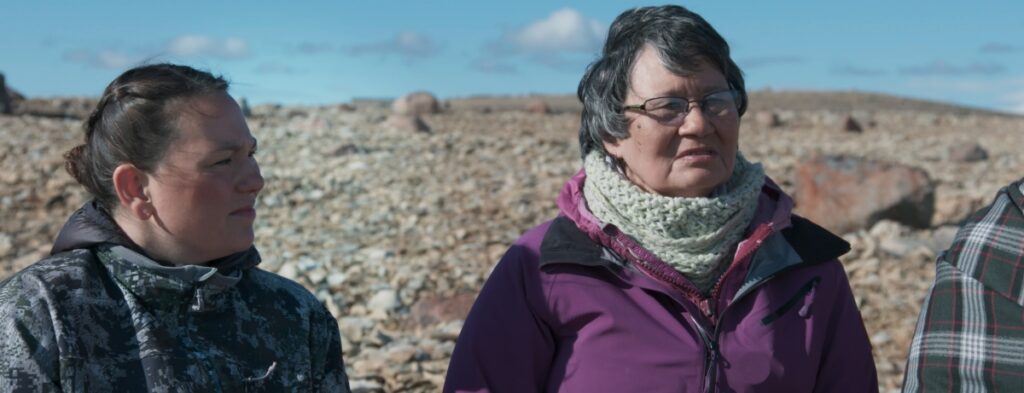
The trauma of such relocations and other oppressions by Canada through the RCMP is transmitted across generations. Split Tooth, Tagaq’s powerful coming-of-age novel, incorporates the ways in which the trauma manifested itself in families and the community, and was passed on from one generation to the next. It also celebrates an adolescent’s sensual imagination and embrace of the natural world. The affinity for rocks, water, wind, and animals that is so eloquently described in words on the page is brought to the sonic world of Ever Deadly, as Tagaq reads poems from the book over images of the land around Cambridge Bay.
The film took years to make, but the experience was pleasurable for the two. Tagaq has said, “Working with Chelsea is easy because we are natural friends. They know how to make me comfortable and they are incredibly accomplished and talented. They also like Arctic char, so it was not much effort to win them over.” McMullan recently reviewed their notes from an early meeting and realized that Tagaq’s vision for the film was clear from the beginning: shooting in her home community; showing throat singing on the land; hearing her mother’s story, told her in her own language; exploding muskox…
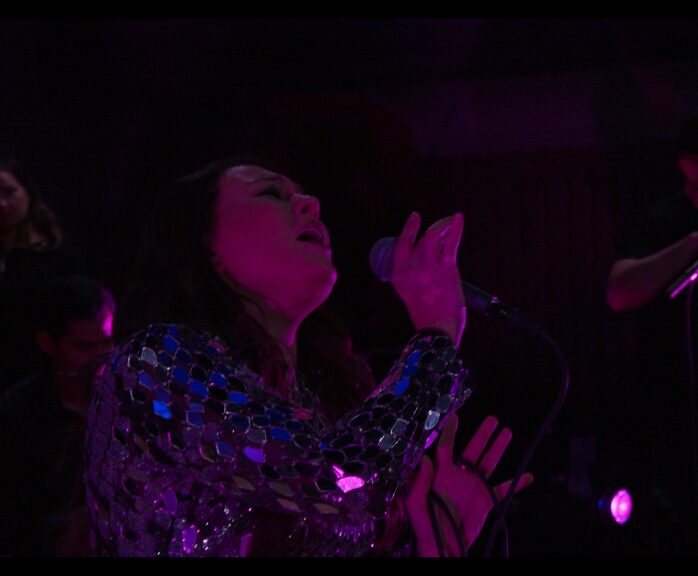
The spine of the film is a performance that Tagaq gave in Toronto. To match Tagaq’s improvisational method, McMullan found a Steadicam operator willing and able to work with them to shoot the performance. “We tried to set up every element to allow the improvisation to happen.” McMullan called the shots from another room, but the camera operator had to move around the singer and the musicians, while keeping an eye on the battery and space on the memory card. “You don’t know if it’s going to work. The NFB insisted on having two other cameras in the audience (as backup). But we knew it had to be done in one continuous shot to give the audience the sense of being on the stage with her.”
The images of exploding muskox were turned into animations of drawings provided by the internationally renowned artist Shuvinai Ashoona from Kinngait. The filmmakers spoke with Ashoona on the phone and sent her the voiceover to elicit her artistic response. The drawings brilliantly interpret Tagaq’s words and sounds, while the method extends the improvisational nature of the filmmaking. The images are based on themes that have long appeared in Ashoona’s drawings: a woman experiencing the pain of delivery, and what emerges from her are planets and shapes of all kinds.
Over a period of years, McMullan and Tagaq’s crew went to Cambridge Bay three times. The filmmakers took a process-forward approach, giving time and careful thought to each scene, each approach, while building relationships in the community. The throat-singing sequence, perfect as it is, involved several takes. The crew moved location; the cinematographer moved closer to the singers; the light was magical. The result is a clear winner to open the film.
The other shots show us the broader landscape, the sound of footsteps on shale, birds and animals, and of course how Tagaq is when she is at home. Her simplicity and her playfulness, are on full view. “She teases people she loves,” says McMullan, who clearly receives a fair amount of teasing from Tagaq.
Ever Deadly is about Tanya Tagaq, and it fulfills her vision. It is about her radical sound that she brings to the south, and where it comes from. The result is indeed Ever Deadly: “Do you know what ‘deadly’ means? It may not be what you think. In fact, it’s some of the highest praise folks can receive or offer in many Indigenous communities. Add an ‘ever,’ which means you or what you are doing, creating, or saying is undoubtedly the very best. Ever deadly, pal,” explains Anishinaabe activist Pytor Hodgson. And as McMullan points out, it’s about the most metal title you could have.




